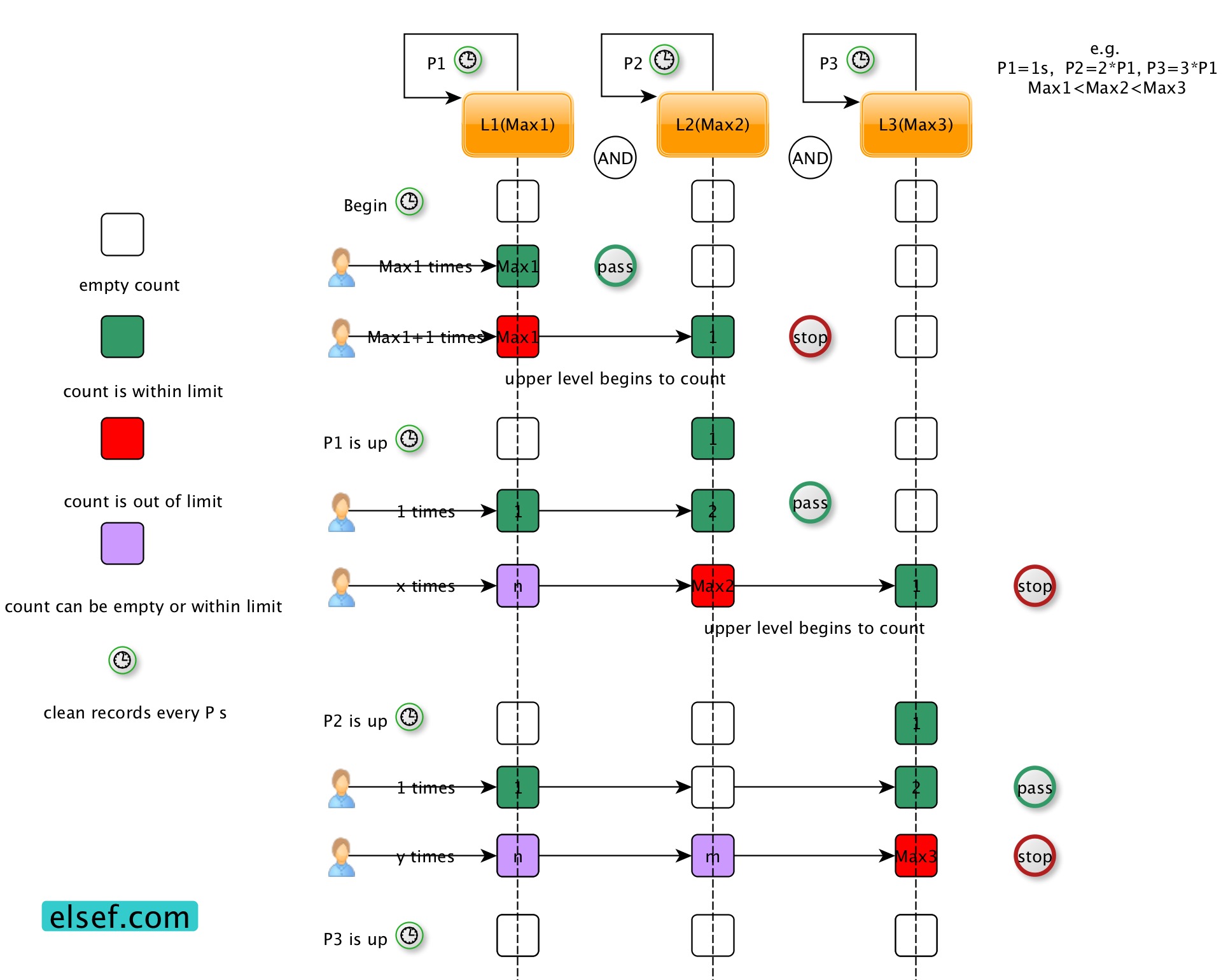What’s the Problem
As an API provider, we always want our resources accessed in a safe way, i.e within the limit of the capability of our system.
How to Do It
We can use a JVM-specified counter to record every IP’s access activity and prohibit access then limit is exceeded.
One Level Limiter
We can use a single level counter to track each IP’s access within a specified period, and clean the records every p time. But what if we also want to restrict the access rule to an upper range of time level, e.g. 5 times per second, 50 times per minute and 1000 times per hour.
Multiple Level Limiter
We can use multiple-level counters to do this work. Each upper layer counter would increase its counter when the layers that is lower than it exceeds its limit.
The reason why we increase the upper limiter’s counter when its preceding limiter is surpassed is that, if we record every IP’s access record in every limiter, say there are 3 limiters: 5 times per second, 50 times per minute and 1000 times per hour, most the IPs are within the limit of the first limiter, but the two later limiters afterwards have to record these normal accesses, in th end you will waste a lot of memory to save that, so there should a trade-off between functionality and performance, we choose performance here.
Algorithm
We use Max, Period to display the limiter’s maximum access times for a single IP in a
specified time range. Bellow is the diagram to show how multiple-level limiters work.

You can see the ancestor’s counter is kicked off by the preceding limiter when its Max is surpassed within its Period.
本文首次发布于 LiuShuo’s Blog, 转载请保留原文链接.